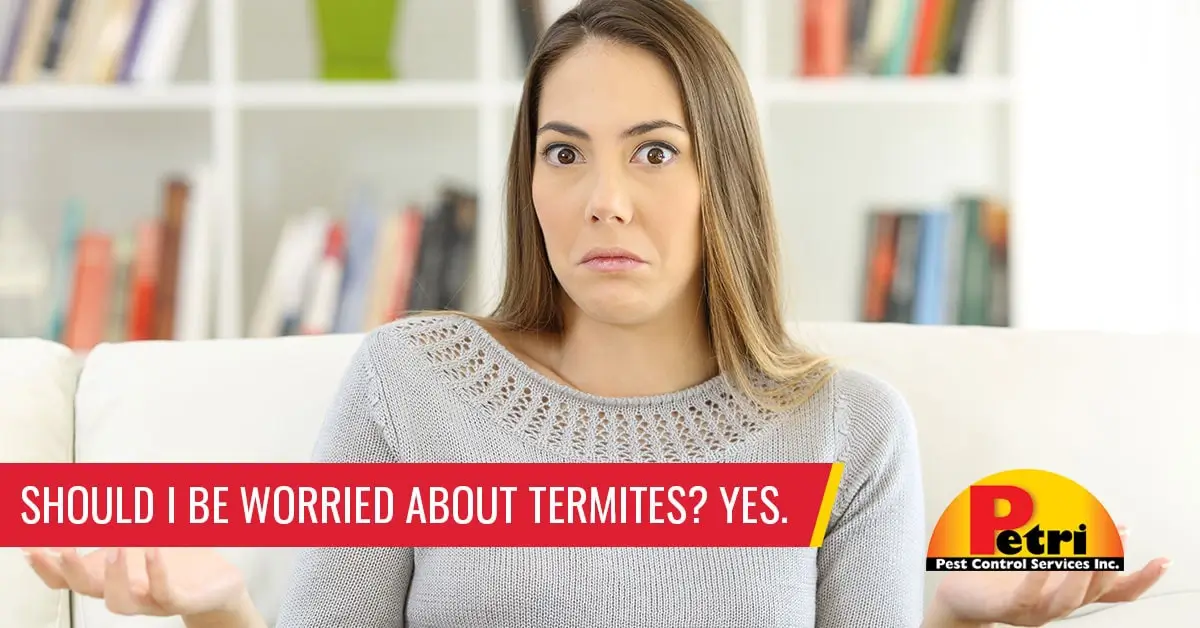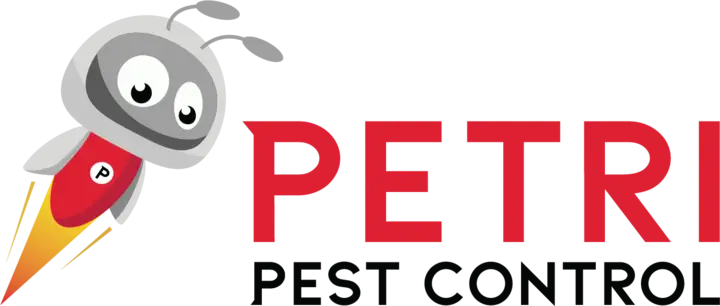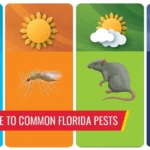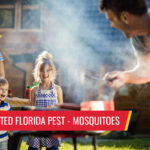
In nature, termites’ role in our ecosystem serves several purposes. These involve breaking down fallen trees in forests, nourishing the soil, and clearing excess wood from forest floors where there is an overabundance of dead trees. Termite mounds are also useful in diverse environments in Africa, Australia, and South America allowing cheetahs a lookout over flat savannahs, elephants a way to access food located on higher branches by standing on them, etc. These mounds provide food for some species and a home for other termites to move into when abandoned. Conversely, when termites come into your home or business, the appreciation for termites’ role in nature comes to a screeching halt and there’s an immediate need for termite control.
Termites can enter your home without you knowing they’re there
One insidious thing about termites is that they usually enter homes through tiny cracks in your foundation or anywhere damp wood or wood-to-ground contact occurs. Because some termites live in the wood they infest in your home and others live in the soil outside your home, you may not notice their presence until they significantly damage your home. The fact that termites cause upwards of five billion dollars worth of damage annually and are expected to infest half of the structures in Florida by 2040 should give homeowners across South Florida pause, as termite damage can be costly and negatively affect the structural integrity of your home, consequently reducing the resale value of your home. While these considerations are bad enough for distraught homeowners, the most insidious thing about termite damage lies in the fact that most homeowners’ insurance companies do not cover termite damage.
Several species of destructive termites are common in South Florida. The species most damaging to structures include:
Drywood termites
Abundant in South Florida, drywood termites move into the wood in your home and carve out existing wood, creating galleries to live in while they continue to eat the wood in your home’s floors, walls, windows, door frames, attics, and wooden architectural features associated with your roof such as ceiling rafters, roof beams, eaves, and soffits. Drywood termites can even establish colonies underneath wooden shingles. When termites swarm, they find a mate and then find a place, such as a small crack in a piece of wood, possibly in your home, to raise a family and establish their own termite colonies. When the newly formed couple finds a place to nest, these swarming termites no longer need their wings and discard them near their new nest sites. Noticing winged termites or discarded wings indoors on windowsills, near doors, and in spiderwebs is a good indication that termites are up to no good in your home. Other signs of termite activity in your home can consist of:
- Blistered walls with peeling paint
- Walls, ceilings, and floors that sag and appear water damaged
- Walls, door frames, and other wooden features that sound hollow when tapped
- Wood that you can easily poke a hole in with a screwdriver or other sharp object
- Piles of sawdust-looking material called “frass,” that is actually fecal matter that drywood termites expel from galleries through kick-out holes
Subterranean termites
The more destructive subterranean termites have populations ranging from 5,000 to 10,000 members. Subterranean termite colonies, however, can number in the millions, especially invasive and aggressive Formosan and Asian subterranean termites, with multiple queens and extensive nests. All subterranean termites need a great deal of moisture to survive and are not warm-blooded so they prefer the soil in the ground outside your home to build their nests, with tunnels made of mud and fecal matter that connect them to the food supply in your home. With many more mouths to feed, subterranean termites will eat anything containing cellulose, including live trees and utility poles. These ravenous pests will eat through plastic to get to wood sources if that’s what it takes. While drywood termites feasting on the wood in your home take a while to inflict damage, subterranean termites can cause structural damage in homes in about six months, ravaging areas they infest. Signs of subterranean termite activity can take the form of:
- Buckling and warped floors, walls, and ceilings
- Hollow sounding surfaces that you can readily poke a hole in with a sharp object (i.e., screwdriver)
- Wood that looks hollowed out along the grain
- Bathroom fixtures that fall off of walls due to subterranean termites eating the cellulose in drywall constructs
- Tiled kitchen floors that sag, due to termites eating wood subflooring
- Evidence of mud tubes running up the sides of your home, up trees, and along utility poles near your home
What’s your next move?
Termites infestations are nothing to play with. If you notice signs of termite activity in or near your Broward County or Palm Beach County home, your best line of defense is an important move. Contacting a local trusted professional, such as Petri Pest Control Services, will save you a great amount of time, effort, and money, trying to eliminate termites yourself.
Pest control professionals
You’re in good hands if your pest control technicians are Sentricon Specialists, trained and licensed in Sentricon’s Colony Elimination System, in addition to using liquid non-repellant applications that work to destroy subterranean termite colonies at their sources and continue to deter termites from building colonies in your yard, for years. Petri Pest Control Services also uses termite detection technology, Termatrac devices will locate drywood termites and eliminate them with liquid treatments. In cases of multiple drywood termite infestations or infestations that are hard to get to in your home, tent fumigation could be recommended.
Termite prevention
In Florida, termite prevention programs can monitor your property for termite activity every year. Your Sentricon Colony Elimination Stations, installed around the perimeter of your property, should be checked for appropriate amounts and quality of baits. Homeowners can take measures to prevent termites from entering their home, by sealing any cracks, crevices, and holes in the home’s foundation, in addition to:
- Painting or sealing all unprotected wood surfaces
- Keeping mulch at least ten inches away from your home’s foundation
- Eliminating woodpiles, such as construction debris, in your yard
- Keeping firewood at least 20 ft. from your home
- Correcting water leaks and draining water prone areas
- Repairing and replacing water damaged wood in your home
- Making sure your gutters drain properly
- Screening all vents in attics and basements
Petri Pest Control Services, offering a full spectrum of pest control options has been servicing Broward and Palm Beach Counties for over 65 years, as a family-owned and operated business that’s committed to your satisfaction. Contact Petri Pest Control Services to schedule a free termite inspection.
We’re on a mission to be your go-to, neighborhood pest control professional for reliable, pest control services in South Florida.
Should I Be Worried About Termites? Yes, Here’s Why in South Florida
Serving Broward County and Palm Beach County


